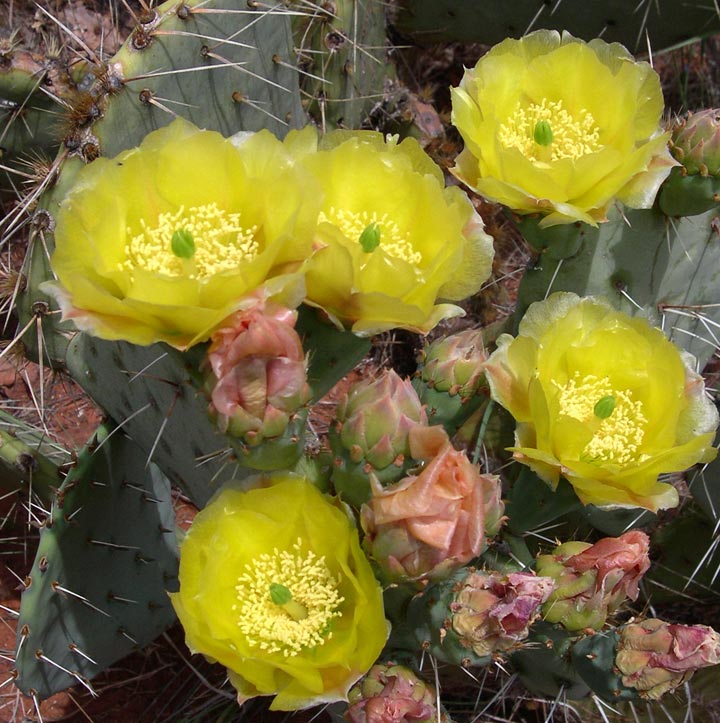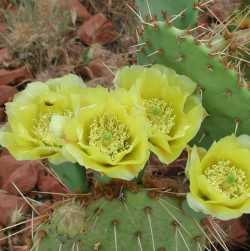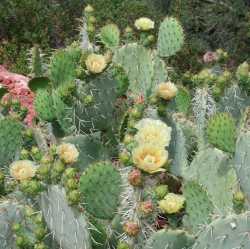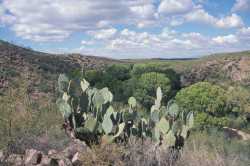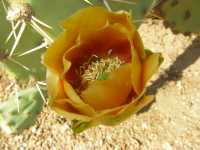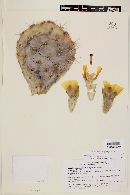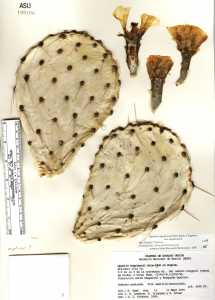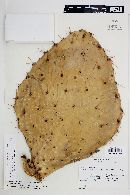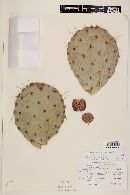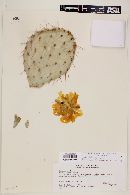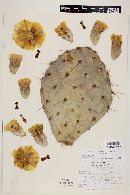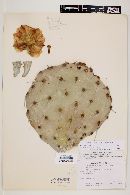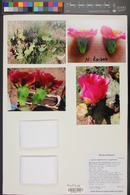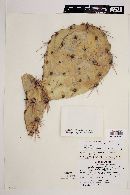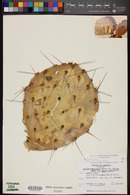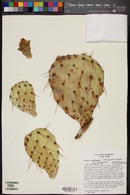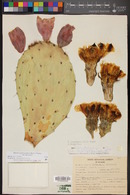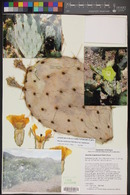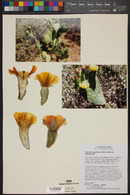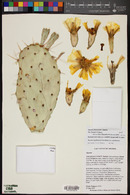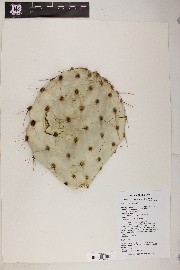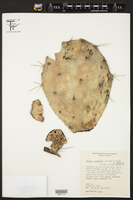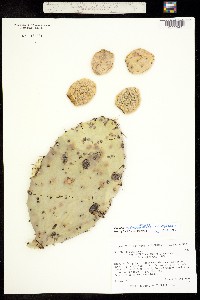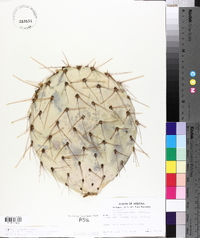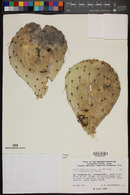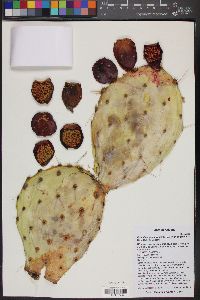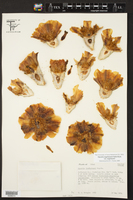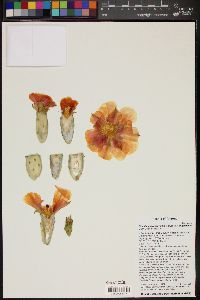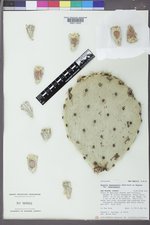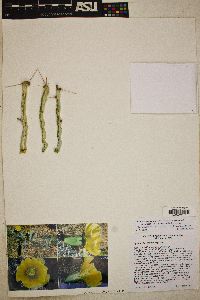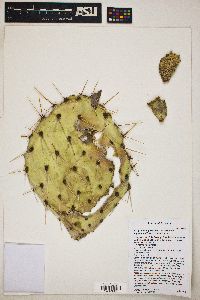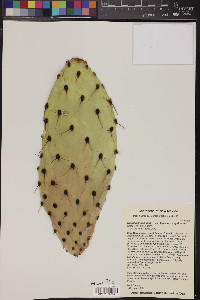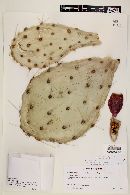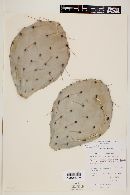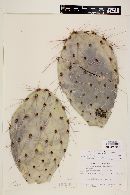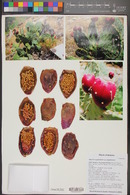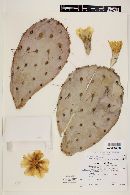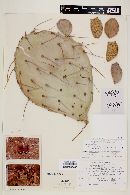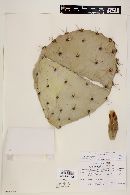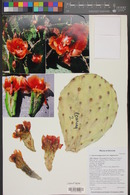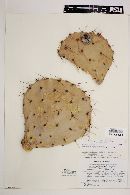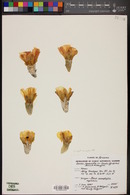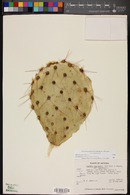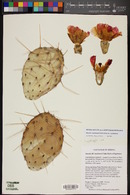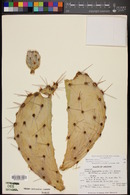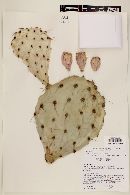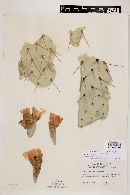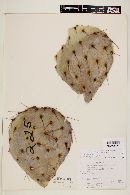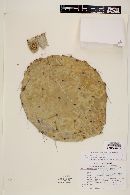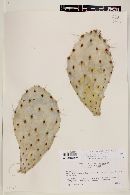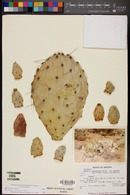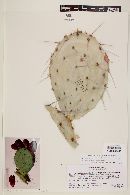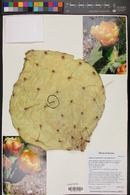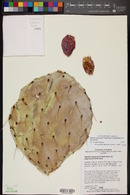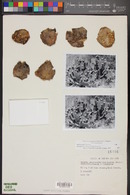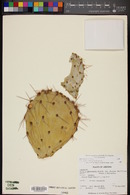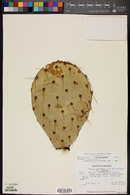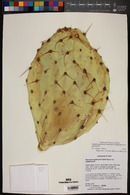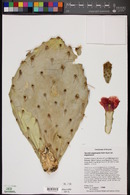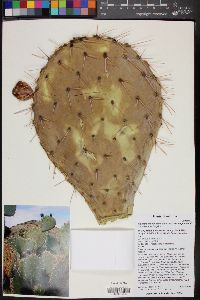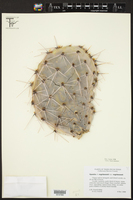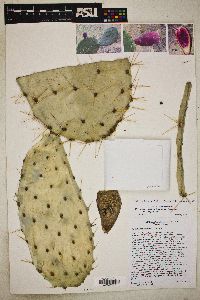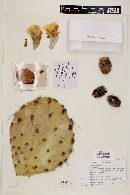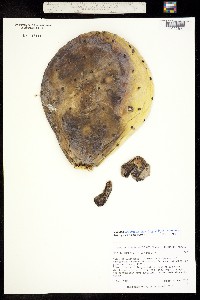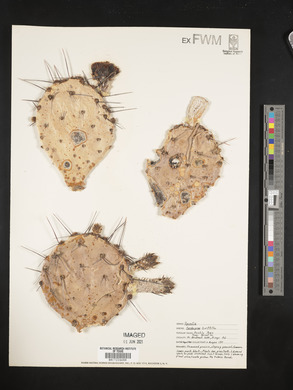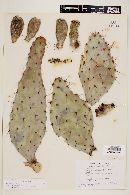
|
|
|
|
Family: Cactaceae
cactus apple, more...cow's tongue prickly pear, tuna (es: nopal)
[Opuntia dillei Griffiths, moreOpuntia lindheimeri var. tricolor , Opuntia megacarpa Griffiths, Opuntia occidentalis var. megacarpa (Griffiths) Munz, Opuntia phaeacantha var. discata (Griffiths) L. Benson & Walkington, Opuntia tardospina Griffiths, Opuntia tricolor Griffiths, Opuntia x subarmata] |
Stem segments circular to obovate to rhombic, 20-40 × 17-30 cm, to 1.5 times longer than wide. Spines (0-)1-5(-12) per areole, absent or at most areoles, chalky white, yellow when wetted, aging gray to black, usually with red-brown extreme bases, longest 20-50(-75) mm. 2n = 66 . Flowering spring (Apr-Jul). Deserts, grasslands, woodlands, plains, sandy soils to rocky hillsides, lower to midslopes of mountains; 300-2700 m; Ariz., Calif., Nev., N.Mex., Tex., Utah; Mexico. In Arizona, California, and New Mexico, Opuntia engelmannii var. engelmannii hybridizes with O. phaeacantha yielding numerous named and unnamed hexaploid forms, including O. wootonii Griffiths; the various intermediates have 2n = 66. Hybrid swarms occur in both Zion and Grand Canyon national parks; these plants were perhaps brought in to the parks by native peoples as a food source and they are associated with agaves also believed to have been imported.
PADS: circular, rhombic to obovate, 20-40 cm long, 17-30 cm broad. SPINES: absent or at most areoles, chalky-white, yellow when wetted, aging gray to black, usually with ± red-dark brown extreme bases, (0-)1-5(-12) per areole, the largest 2-5(-7.5) cm long. Fruit usually edible. 2n = 66 (only once reported as 44 in TX). NOTES: See also parent taxon. Sandy soils to rocky hillsides, deserts, grasslands, woodlands, on plains and lower to mid-slopes of mountains; Cochise, Coconino, Gila, Graham, Maricopa, Mohave, Pima. Pinal, Santa Cruz, Yavapai cos.; 300-2650 m (1000-8700 ft); Apr-Jul; CA, NV, NM, TX, UT; adjacent Mexico. Var. engelmannii hybridizes with O. phaeacantha yielding numerous named and unnamed forms in AZ, CA and NM; the various intermediates counted are 2n = 66. REFERENCES: Pinkava, Donald J. Cactaceae. 2003. J. Ariz. - Nev. Acad. Sci. Volume 35(2). Benson 1982, FNA 2003 Common Name: cactus apple Duration: Perennial Protected Status: Salvage restricted status in Arizona. General: Form similar to that of O. engelmannii except that the stem segments are circular to obovate to rhombic, 20-40 cm long by 17-30 cm wide. Spines: Spines 0-5 per areole, variable at areoles, these chalky white and yellow when wetted, aging gray to black and usually with reddish-brown extreme bases, the longest are 20-50 mm. Flowers: Inner tepals uniformly yellow to buff but sometimes orange to pink to red, 3-4 cm long, with filaments and style a whitish to cream color, while the fresh stigmas are yellow green to green. Fruits: Deep red to purple and elongate ovate to barrel shaped, they are sometimes stipitate and spineless, juicy and 3.5-9 cm long by 2-4 cm in diameter. Ecology: Found on sandy soils to rocky hillsides, lower to mid-slopes of mountains from 1,000-9,000 ft (305-2743 m), flowers April-July. Notes: Distinguish this variety by its chalky-white spines that are yellow when wetted, with dark the red-brown extreme bases. According to FNA, this variety is known to hybridize with O. phaeacantha yielding numerous named and unnamed hexaploid forms, including O. wootoni. Hybrid swarms occur in both Zion and Grand Canyon, possible grown as an intentional food source by native peoples. Ethnobotany: Fruit used as food, as were the pads, these were dried or boiled like cabbage with tomatoes, onions and peppers to make a stew, pad juice was also used to lubricate oxcart wheels. Etymology: Opuntia from ancient root puncti for prickled, while engelmannii is named for Georg Engelmann (1809-1884) a German born, American botanical collector. Synonyms: None Editor: LCrumbacher, 2010 |
This project was made possible in part by the Institute of Museum and Library Services [MG-70-19-0057-19].
Powered by Symbiota

